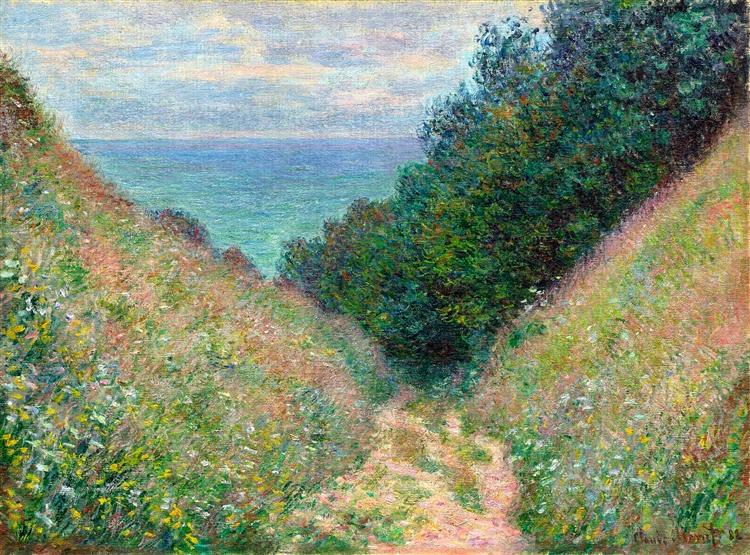Beschreibung
In Claude Monet’s 1882 painting “Road at La Cavee - Pourville,” the viewer is transported to a rural setting full of life and vibrant color that masterfully captures the light of day. Monet, one of the founders of Impressionism, employs here his signature approach to depicting nature and its luminous effects, developing a style that not only observes the landscape but also feels it and translates it into quick, expressive brushstrokes.
The composition of “Path at La Cavee - Pourville” is meticulously balanced, presented in a perspective that guides the viewer’s eye along the path that stretches through the landscape. In the foreground, an earthy path can be seen winding, suggesting a journey through nature, inviting contemplation and movement. This sense of movement is enhanced by the undulations of the surrounding vegetation, perhaps one of the many features that Monet would master throughout his career.
The use of colour is another notable aspect of this work. Monet moves away from a dark, heavy colour palette, embracing brighter, more vibrant tones. The short, loose brushstrokes characteristic of Impressionism manage to capture light and atmosphere, creating the illusion of a fleeting moment. Areas of greens and yellows, intertwined with subtle touches of blue and white, evoke a sense of freshness and a deep respect for nature. As the eye moves up the path, the tones fade into a lighter sky, highlighting the balance between earth and sky, the earthly and the heavenly.
It is fascinating to note the absence of human figures in the painting, a deliberate shift on Monet’s part that allows the landscape to speak for itself. In this work, the focus rests entirely on the natural surroundings, a testament to Monet’s interest in the power of the landscape as a dominant entity. The absence of human characters could be interpreted as an invitation to viewers to reflect on their own relationship with nature, to find themselves in the empty space that, although devoid of human presence, is full of life and movement.
When looking at the work, one can connect with the historical context in which Monet was working. During the 1880s, Impressionism had gained momentum and was beginning to define itself as a major movement in the art world. Monet, with his transitional landscapes and attention to changing light, contributed significantly to this evolution, becoming a pioneer of a new way of looking at art. The work captures the essence of his style, where the technique of imprinting light and colour on the canvas transforms a simple path into an almost poetic visual experience.
“Path at La Cavee - Pourville” is a representation of Monet’s search to understand light and color, and their relationship to the landscape. In this sense, this painting is not only a work of art, but also a pictorial respite, an instant that invites contemplation and recognition of the sublime power of nature. Monet, through this piece, not only captures a moment on a path, but offers a reflection on the passage of time and the ephemeral beauty of the natural world.
KUADROS ©, a famous painting on your wall.
Hand-made oil painting reproductions, with the quality of professional artists and the distinctive seal of KUADROS ©.
Painting reproduction service with satisfaction guarantee. If you are not completely satisfied with the replica of your painting, we will refund 100% of your money.

